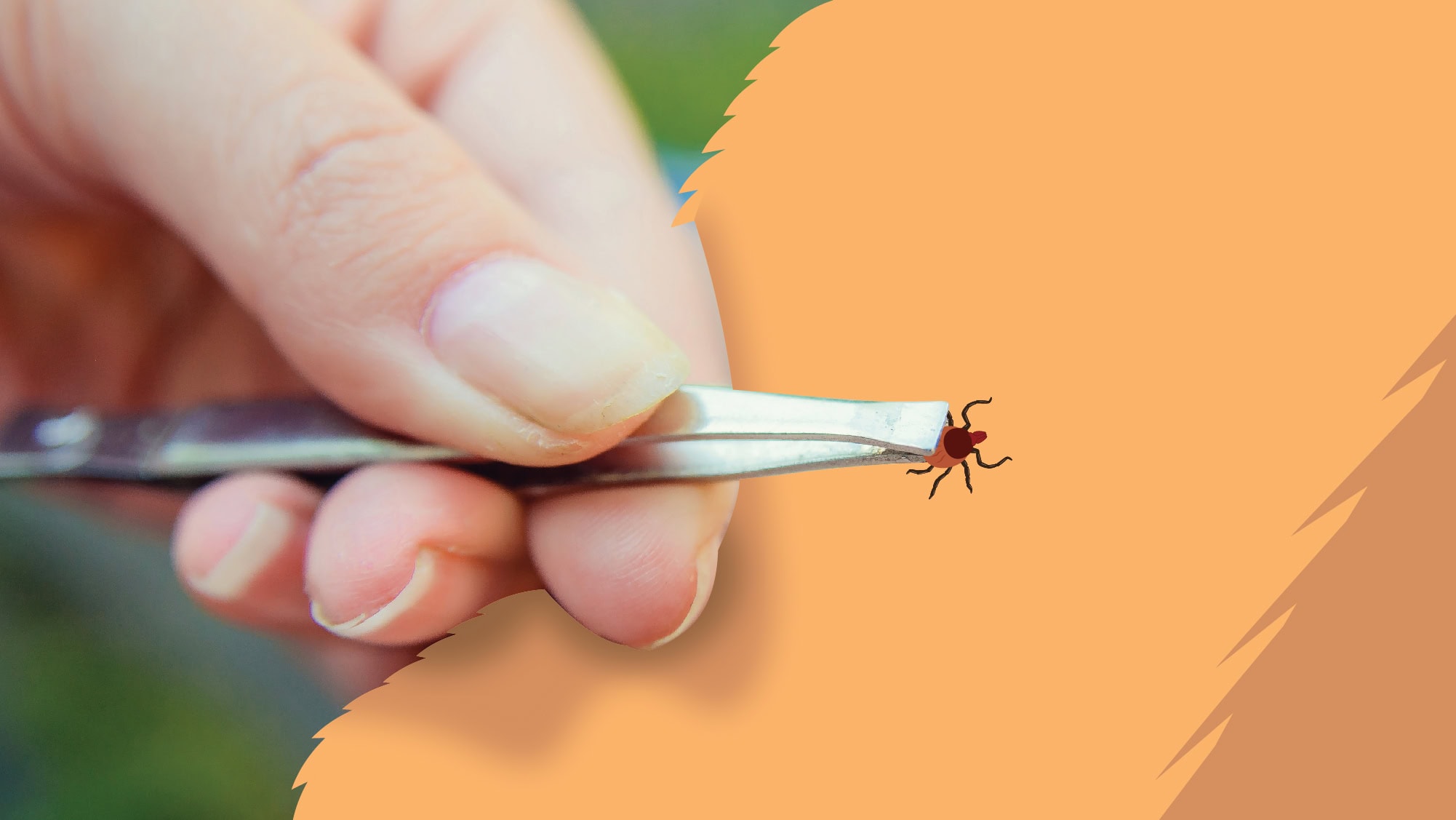Ticks are arachnid parasites that live in long grasses, brush, and wait for a host to come nearby. Ticks can smell the host and sense heat and movement when the opportunity arises.
If you find a tick, it’s best to remove it immediately to prevent disease transmission. Consider the following steps to help you learn how to remove a tick from a dog.
1. Set the Right Environment
Before attempting to remove the tick, ensuring your dog is calm or distracted is crucial. Offering treats or gentle petting from another family member can help keep your furry friend at ease.
2. Prepare the Area
To facilitate easy tick removal, dampen the fur surrounding the tick. This helps the fur lay flat, making it easier to access the tick. Some evidence suggests that rubbing alcohol or peroxide can cause the tick to loosen its grip.
3. Choose the Right Tools
When it comes to removing ticks, having the proper tools is essential. Tweezers or small needle-nosed pliers can be used in a pinch. Alternatively, you can opt for commercial tick remover tools specifically designed for this purpose and work effectively.
4. Remove the Tick
With the tool in hand, hold it parallel to your dog’s skin and carefully grasp the tick as close to the skin as possible. Remember not to twist or yank the tick. Instead, apply steady upward pressure in one smooth motion. It should take about 2–3 seconds to remove the tick altogether.
5. Handling the Head
If the tick’s head remains embedded in your dog’s skin, there’s no need to panic. This is a common occurrence. If the head is visible, you may try to grasp it with the tweezers and remove it. However, avoid poking or digging at it, as it could push the head further into the skin. If you’re unable to remove it, monitor the area.
In most cases, the dog’s body, like a splinter, will naturally expel the head within a few days. However, if you notice excessive swelling or irritation, a veterinarian should evaluate your pet, as some tick bites can lead to infections.
Take an Active Role in Tick Prevention
Take an active role in tick prevention for your dog by staying on top of your pet’s health care.
BetterVet offers mobile pet care, giving your pet exceptional care right in the comfort of your own home. Schedule a visit with a veterinarian from BetterVet today to get started!
Frequently Asked Questions
What do ticks look like on dogs?
Ticks on dogs have a distinct appearance that can help you identify them. They have eight legs attached to their abdomens, which are visible because only the head is embedded in the skin. Ticks are often small, black or brown, and oval in shape. Sometimes, pet parents may mistake moles or small growths for ticks, so it can be helpful to search for pictures of ticks on dogs to understand better what you should be looking for.
How do ticks attach themselves to dogs?
Ticks attach to your dog’s skin by burying their head and mouthparts. A tick on a dog can often stay attached for hours up to 1–2 days. During that time, they suck blood from their host, putting your dog at risk for various diseases transmitted through the tick’s saliva.
What are the signs of tick-borne illnesses in dogs?
Look out for lethargy, limping, muscle pain, and fever. If you notice these symptoms, schedule a BetterVet appointment.
What diseases can ticks transmit to dogs?
Ticks can carry diseases like Lyme disease, which can lead to anemia and affect red blood cells in dogs. It’s important to note that Lyme disease doesn’t always present as a bullseye tick bite.
How soon can tick diseases be transmitted to dogs?
Tick diseases can be transmitted within a few hours of tick attachment. Promptly removing ticks from your dog is crucial.
Should I check my dog for other ticks if I find one?
Yes, thoroughly check your dog’s entire body, including between the toes, to ensure no other ticks are present. Remember to note the date of the tick bite as signs of disease may not appear for 6-8 weeks.
How can I prevent my dog from getting bitten by ticks?
Use a high-quality tick preventative recommended by your vet, such as the Seresto collar or Simparica pill. Discuss prevention options and dog vaccinations during your vet visit for personalized recommendations.





